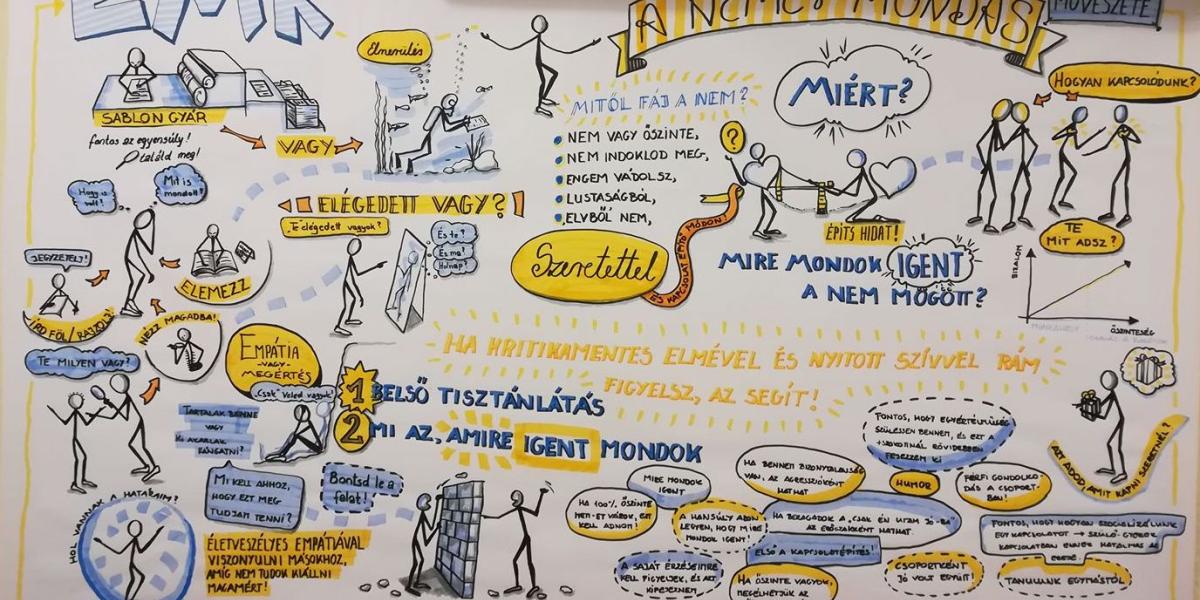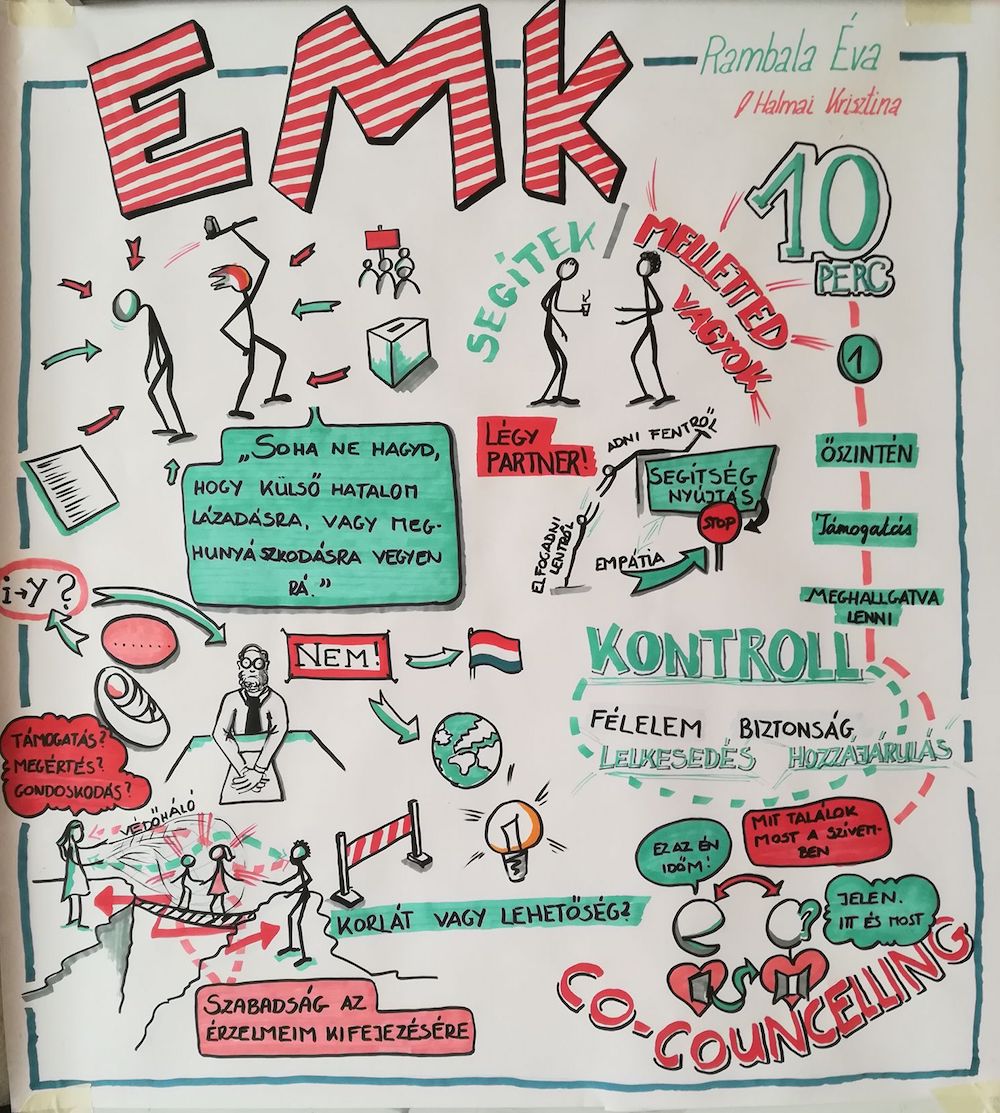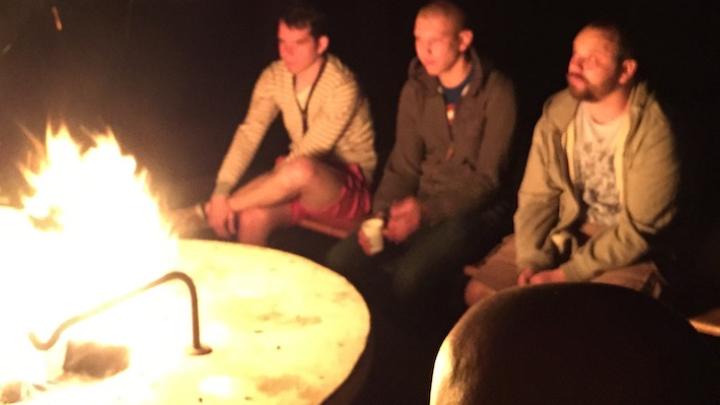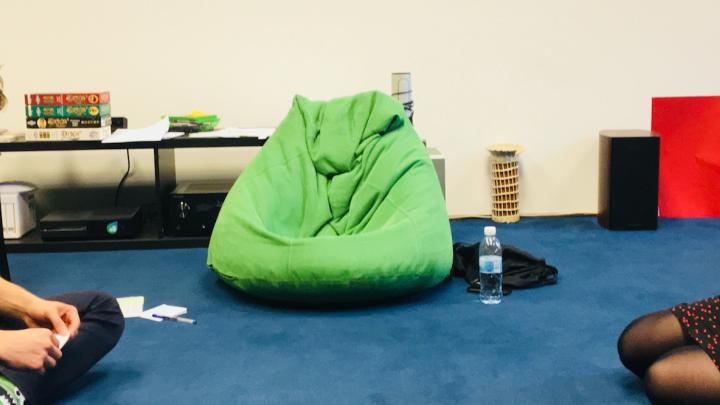
We were sitting in a circle of ten in the Rambala group. I was curious and anxious. I was interested to see how Eve would pass on her experience in non-violent communication (NVC). I was worried that I would choose to shut myself away among strangers because I was not safe. Because I don't know what I can say without getting hurt. I decided to focus on Eve first and foremost to deepen what I came here to do.
1. The death of the counselor
The first session was in this spirit. I was critical of the group but receptive to new ideas. The most vital sentence was that I would only advise with the countersignature of a lawyer and the signatures of two witnesses.
I remember how similar it was to this when Gergő brought in integrative decision-making to facilitate company retreats, the advisory voices were toned down, and communication in the group kicked in.
2. Anger as an opportunity
In the second session, we dealt with anger. In the intervening three weeks, I filled in a dozen templates. The situations I had been running away from before now proved to be a good training ground. I made sure to accurately write down my observation immediately after the tense situation to reflect on the feeling-need pair from that. I found the fourth step of the NVC, the request, challenging to articulate in most cases. I was glad that I was at least closer to my feelings. I was able to stay energized in situations that I had previously preferred to exit.
Anger is a signal that something important is happening. For many years I lived under the belief that I was in control of my anger, so I didn't experience it. Then some therapeutic work made me realize that this is not the case. I have mastered the art of sweeping under the carpet the unpleasant effects that can trigger anger. I also push my neediness to the back burner, the most apparent consequence of which I don't connect in these situations. In the angry state, I have the opportunity to find my underlying repressed need.
There was talk of dangerous empathy with someone if I can't stand up for myself. I can stand up for myself when I know my feelings and needs. It is good to understand what authentic feelings and conditions are. It's lame, but I use the rifle that Eve compiled for this purpose because I cannot remember the 36 textures and 56 needs used in the NVC to describe many situations.
3. What do I say yes to when I say no?
In the third session, we looked at saying no without closing myself off and hurting the other person.
If I have insecurities, it's easy to be aggressive. What do I say yes to when I say no? This was the day after which cold calls took on different content. Telemarketers are very savvy about how to handle rejection. Most are amazingly effective at finding the connection with the other side. This is a skill I have not noticed in recent years, so I have not rewarded it. Whenever an insurance agent called me, I bluntly told him I wasn't interested in his offer and asked him to remove me from the list. I was angry that he was wasting my time and trying to push a product on me that I didn't need right then and there.
Last week one such call found me on my lunch break, and I listened to the other party. I told him that his inquiry would be relevant as soon as we had more savings. We ended the conversation on a good note, and I admired his efficient means of finding out more details about the company's situation. He connected, didn't push, and used the technique of one last question. While he was busy doing this, I made sure to be firm but not aggressive and say no so that the other party could understand the reason. I hung up the phone in a good mood. It was the first time I felt comfortable after a cold call in the last two decades.
4. The curse of helpfulness
The fourth time was all about empathic connection. I was surprised by the level of transformation in my group experience. I felt safe, relaxed, and interested in the situational exercises. It was no longer the group leader who was of paramount importance but the group itself. I was not primarily interested in Eve's method but our typical responses to situations. The focus was on connection rather than understanding.
The biggest lesson of the day was the relationship between helpfulness and control. It may sound surprising, but according to Eve, the empathic connection is most inhibited by the intention to help. Helping can be given from the top, accepting from the bottom. In helping, the helper is strengthened, and the supported is weakened.
Whenever I want to help someone, I usually get energized, and the other party gets at best an idea that may or may not help them but is not visibly energized. An intention to help, in which I emphasize my competencies while taking away the possibility that the supported party will find their answer to the situation, destroys rather than builds. Whenever I use my influence to "get the situation," I control my environment with my support.
Deepening into Marshall Rosenberg's nonviolent communication is like learning a foreign language. As the vocabulary builds and I begin to understand the grammar, I have the impression that I am discovering a new dimension of connection.
Eva Rambala is one of the few people in Hungary who is an expert in this language. In her group sessions, I was deeply touched by the way she took up the other party's position on a given topic and, through role-playing, revealed the underlying needs. She created a qualitative connection with her attention through the NVC language, which inspires further language learning.
Related links
-
Eva Rambala's official website - http://rambala.hu
-
EMK Exercise Booklet - I put it together during the training; this is the structure I use to fill in my templates.
-
Basics of Nonviolent Communication - Marshall Rosenberg's lecture translated by Zoltán Nagy - https://www.youtube.com/watch?v=g8dDDtjrrow

Share with your friends!


